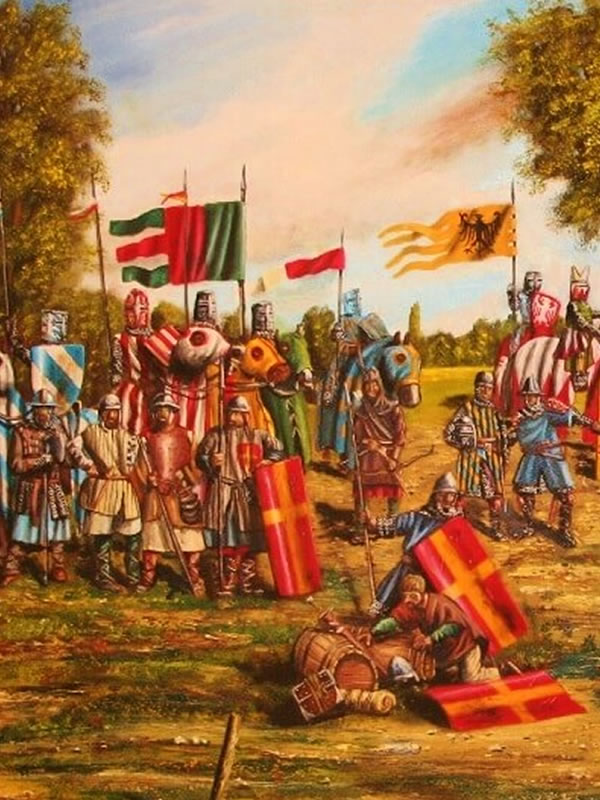A Millenium of history
Leonardo Da Vinci’s “Codex Atlanticus”
During the 15th century, the castle became the property of the Capponi family of Florence whose sixteenth-century coat of arms can still be admired today on the ancient walls.
Leonardo da Vinci depicts the Castle of Policiano in the “Codex Atlanticus” on the Map of the Val di Chiana. The genius of the Renaissance visited the castle during his trip in 1503 to discover the Arezzo area.
In 1848, the castle was bought by the Chigi Saracini, a noble banker family of Sienese origin. In 1910 all the buildings owned by Chigi Saracini were taken over by Sidney Mary Hertz of Barbolani di Montauto who transformed the Castle into a farmhouse, renovating it with the architectural style of that period, which is reflected in the front facade.
Since the beginning of the 20th century, only women have been in possession of il Castello di Policiano, a tradition which has yet to be broken.


A brief Summary
In 963 AD, the Holy Roman Emperor Otto the Great concedes the castle and its court to the Canonina Aretino. In 1040, il Castello di Policiano was chosen as a wedding gift by Pietro Eriberto, the heir to the historic family Ghibellina degli Azzi, to his future wife Gualdrada.
Just 4 years later, the castle was passed on to Uguccione dei Marchesi de Bourbon del Monte Santa Maria, one of the most important feudal families of the Middle Ages in Tuscany who were then nominated imperial vicars by Emperor Charlemagne.
In the 13th century, the castle became a stop over for many of the travelers headed to Rome passing through via Francigena. It is thought that San Francesco Di Assisi often resided in the castle during his voyages from Assisi to the Franciscan sanctuary de La Verna.
In 1265, Guglielmo degli Ubertini, who went down in history as “the warrior bishop”, took possession of the castle and obtained the oath of obedience and loyalty of 54 men. It was the warrior bishop who led the Ghibelline army against the Guelphs in the famous battle of Campaldino in which he perished.


